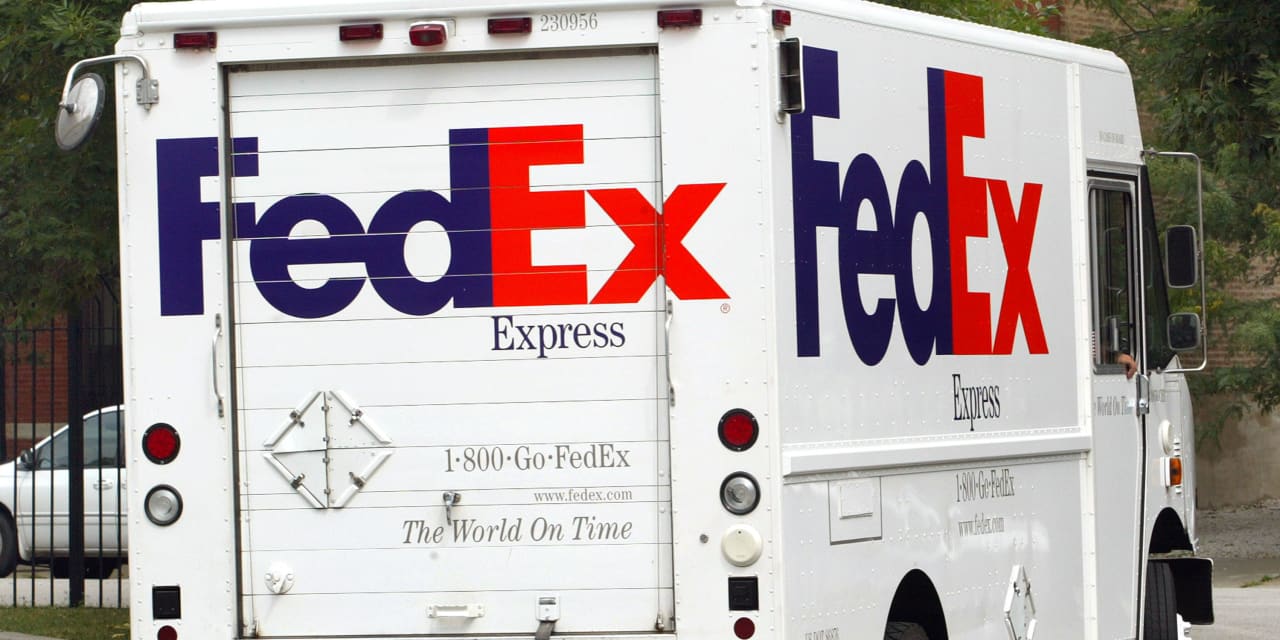FedEx Corp. was the S&P 500’s worst performer on Wednesday, after the package deliverer a day earlier trimmed its sales forecast and reported weaker-than-expected quarterly results.
And as Wall Street picked apart the financials, many analysts — while still praising the company overall and its efforts to slash billions of dollars in costs — singled out FedEx’s
FDX,
large air-and-ground Express segment as the source of the company’s troubles.
Shares of FedEx tumbled 10.9% on Wednesday. The drop put the stock on track for its worst percentage decrease since Sept. 16, 2022, when shares nosedived 21.4% on investor worries over inflation’s impact on the economy and a drop-off in shipping demand following the pandemic’s e-commerce boom.
Just days after that hit to the company’s share price last year, executives announced a plan to cut billions in costs. That plan evolved into an effort to slash $6 billion by fiscal 2027 and led to a bigger rebound for FedEx’s stock, which is still up 40.7% this year.
But on Tuesday, investors’ hopes, and their patience, evaporated when FedEx reported fiscal second-quarter results that missed Wall Street’s expectations. The company also said it now expected a “low-single-digit percentage decline” for its fiscal 2024, compared with prior expectations for “approximately flat” sales.
“The primary driver of the bottom-line miss continued to be the impact of severe macro headwinds on Express volumes and revenue and the inability of [FedEx] to move the cost needle as quickly in that segment,” Evercore ISI analyst Jonathan Chappell said in a note on Wednesday.
“A key question for investors and a point of discussion on the [second-quarter] conference call was essentially what is necessary to fix Express,” UBS analysts said in a note on Wednesday.
FedEx’s Express business is the company’s largest by sales. It handles expedited air and ground package deliveries around the world, with a fleet of 700 jets and thousands of trucks. Revenue, profit and shipping volumes for the Express business fell during the quarter.
FedEX executives, during the company’s earnings call on Tuesday, cited a number of issues that have hurt that segment and outweighed efforts to make operations leaner.
They called out weaker industrial production worldwide, which has led to lower shipping volumes, along with slower demand in Asia and lower fuel surcharges, or the fees deliverers tack on to a shipment to offset fuel costs. They also said a shift toward cheaper shipping options and the U.S. Postal Service’s decision to do more deliveries via ground rather than air shipping had also hurt.
However, Chief Executive Raj Subramaniam said many of those issues were “transitory.” Some analysts seemed to agree, arguing that FedEx’s cost-cutting efforts were better than the dour mood of Tuesday’s earnings call implied.
Citi analyst Christian Wetherbee said Wednesday’s drop represented a buying opportunity, writing that “we don’t think much has changed in the trajectory of earnings power through [fiscal] 2025.” Susquehanna analyst Bascome Majors also said “our sense from the numbers is that cost-takeout results were better than the tone of last night’s call ex-fuel.”
Still, the analysts at UBS said “more patience” was needed for the Express unit to turn itself around.
They said that along with cost cuts, stronger sales were also necessary. But they also suggested a recovery would depend on the broader ebbs and flows of consumer sentiment and the economy.
“We believe [FedEx] has additional cost levers in [fiscal] 2025 (second year of DRIVE) and in following years due to Network 2.0 which can support margin improvement,” they said, referring to the company’s initiatives to cut costs and overhaul its delivery infrastructure.
“However we also believe the cyclical backdrop is an important factor and a cyclical lift in domestic express and International package & airfreight markets is a key lever,” they said.
Read the full article here




